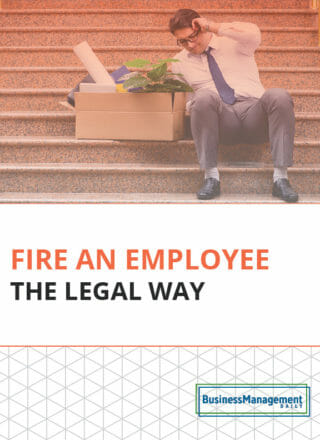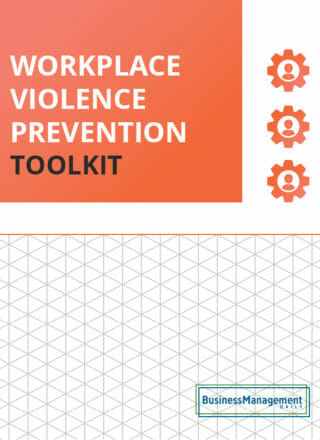FMLA leave: What counts as a serious health condition?
Defining severe health conditions under FMLA
The Family and Medical Leave Act (FMLA) allows eligible employees to take job-protected unpaid leave. Employees can use this leave when they need to seek care for a serious health condition. Alternatively, they can use it when an immediate family member needs such care.
Furthermore, employees can use this leave when they are incapacitated by a serious health condition. Additionally, the act also allows for maternity leave. Similarly, it allows for paternity leave. Finally, it allows for certain types of military caregiver leave.
The FMLA provides important protections for employees, but navigating FMLA leave requests can be challenging for employers. Under the FMLA guidelines, it can be tough to differentiate between a standard illness and a serious health condition. To help, we’ve listed the full criteria and answered some common questions about what conditions qualify for FMLA leave.
FMLA eligibility
Before worrying about whether a condition qualifies as a serious health condition, it’s a good idea to verify whether the employee is even eligible for FMLA leave. First, the employee needs to work for a covered employer.
Employers must meet one of the following conditions in order to qualify as a covered employer:
-
Private-sector employer with 50 or more employees in 20 or more workweeks in the current or preceding calendar year, including a joint employer or successor in interest to a covered employer;
-
Public agency, including a local, state, or federal government agency, regardless of the number of employees it employs; or
-
Public or private elementary or secondary school, regardless of the number of employees it employs.
If an employee works for a covered employer, then the following criteria can be used to determine if that employee is eligible for FMLA leave.
An employee at a covered employer is eligible for FMLA leave if they have:
-
Worked for the employer for at least 12 months. Breaks in service are allowed as long as they are for less than seven years.
-
Worked at least 1,250 hours for the employer within the last 12 months.
-
Work at a location where the employer has at least 50 employees within 75 miles.
If all of the criteria are met, then it’s time to verify whether they have a valid serious health condition.
What counts as a serious health condition?
 Particular guidelines define what constitutes a serious health condition. Furthermore, these guidelines aren’t necessarily based on the employee’s diagnosis or the family member’s diagnosis.
Particular guidelines define what constitutes a serious health condition. Furthermore, these guidelines aren’t necessarily based on the employee’s diagnosis or the family member’s diagnosis.
Instead, they largely focus on the impact of the illness on the employee or their family member and the treatment required.
For the purposes of FMLA, a “serious health condition” is defined as an illness, injury, impairment, or physical or mental condition that involves one of the following:
-
Hospital care. Inpatient care (overnight stay) in a hospital, hospice, or residential medical care facility, including any period of incapacity or subsequent treatment connected to inpatient care.
-
Ongoing medical care. A period of incapacity of more than three consecutive calendar days (including any subsequent treatment or period of incapacity relating to the same condition) that also involves one of the following:
• Two or more visits to a health care provider. The first visit must occur within seven days of the first day of the incapacity, and both visits must occur within 30 days of the first day.
• A regimen of continuing treatment, with the first visit taking place within seven days of the onset of the incapacity.
-
Pregnancy. Any period of incapacity due to pregnancy or for prenatal care. Yes, morning sickness counts if it is severe enough to impact the employee’s ability to perform the essential functions of their job
-
Chronic serious health conditions require periodic treatment. A chronic condition that extends over a period of time requires periodic treatments by a health care provider. “Periodic visits” are defined as at least two visits to a health care provider per year. The incapacity may be episodic or recurrent rather than continuous. Examples include asthma, epilepsy, and diabetes.
-
Permanent/long-term conditions that require supervision. A permanent or long-term incapacity due to a condition that may not respond to treatment. The employee or family member must be under the continuing supervision of a healthcare provider but need not be receiving active treatment. Examples include Alzheimer’s disease, a severe stroke, and the terminal stages of a disease.
-
Ongoing treatments without incapacity. Any period of absence can qualify. This includes absences to recover from restorative surgery. It also includes absences to receive multiple treatments for such surgery. This surgery could be after an accident. Or, it could be after an injury.
Furthermore, absences for a condition that would likely result in incapacity also qualify. This incapacity must be for more than three consecutive calendar days. It must also be in the absence of medical intervention or treatment.
For example, cancer treatments like chemotherapy and radiation qualify. Similarly, treatments for severe arthritis like physical therapy qualify. Finally, kidney disease treatments like dialysis also qualify.
How do employers verify that an employee possesses a qualifying serious health condition?
Employers may request medical certification to verify that an employee qualifies for FMLA leave. This certification must be completed by the employee’s healthcare provider using DOL Form WH-380-E. It will lay out that the employee has a serious health condition as defined under the FMLA and may provide some information on how that condition impacts their work schedule or ability to complete their essential job functions.
If the FMLA request is related to a family member’s health condition rather than the employee’s serious health condition, they should provide Form WH-380-F instead.
One thing to remember is that while an employee may opt to share this information, employers cannot demand a diagnosis. The FMLA or its regulations no longer specify that a diagnosis is a predicate to leave eligibility. And there’s no need for a diagnosis, as employees may have symptoms that amount to a serious health condition without a diagnosis.
In addition, a diagnosis may reveal a disability under the ADA—which forbids employers from requesting medical information when the employee has not requested ADA protection. Thus, it’s best to stick with the official DOL certification form and avoid prying on the qualifying medical condition.
Does the common cold or flu count as a serious health condition?
 The FMLA isn’t necessarily designed to cover minor ailments like the flu, common cold, or an upset stomach. If an employee simply stays home with a cold or the flu for a few days and doesn’t require medical treatment, they generally need to use their sick days rather than leave.
The FMLA isn’t necessarily designed to cover minor ailments like the flu, common cold, or an upset stomach. If an employee simply stays home with a cold or the flu for a few days and doesn’t require medical treatment, they generally need to use their sick days rather than leave.
Some people may have complications from any of these conditions. These complications could require hospitalization or ongoing medical treatment.
For example, an employer may balk at an employee’s FMLA leave request for the flu. However, it is important to remember that the flu leads to thousands of hospitalizations each year and thousands of deaths.
The CDC estimates that there were around 100,000 hospitalizations and 5,000 deaths related to the flu during the 2021-2022 flu season. Therefore, depending on the severity and complications involved, the flu can become a “serious health condition.”
Can employees use FMLA leave for mental health?
Yes, mental health conditions are treated the same as physical health conditions under the FMLA. An employee may use FMLA for mental health conditions. This is possible as long as they are receiving ongoing care for the condition.
Alternatively, inpatient treatment also qualifies. Furthermore, they must provide proper medical certification documentation from a recognized health provider. This includes employees receiving treatments like weekly therapy for depression and anxiety.
Employees not under the care of a medical provider who needs a “mental health day” to rest and recuperate from normal workplace stress will typically not be able to use FMLA leave. Employers should encourage the use of paid time off instead.
Can employees use FMLA leave for cosmetic procedures?
Generally no, cosmetic procedures like plastic surgery or botox typically don’t qualify as serious health conditions under the FMLA. The exception is when they are medically necessary or restorative in nature.
Restorative surgery has several examples. For instance, breast reconstruction after a mastectomy for breast cancer is one example. Additionally, cleft palate repair is another example.
Finally, facial surgery after trauma is also an example. This trauma could be a severe dog bite. It could also be a burn. Or, it might be a car accident.
Are migraines a serious health condition?
Standard headaches are not considered a serious health condition unless they are a symptom of a larger medical condition. However, migraines are commonly considered a serious health condition under the FMLA because they can cause debilitating pain.
Consequently, this pain can incapacitate an employee. They may be unable to go to work or finish their workday.
As a result, employees suffering from chronic migraines will typically take intermittent leave. They do this so that they can miss work when they have a bad migraine flare-up.
More resources:
FMLA and mental health — what you need to know as an employer
FMLA retaliation — what employers need to know
What can you not do while on FMLA leave? Top things to look out for





